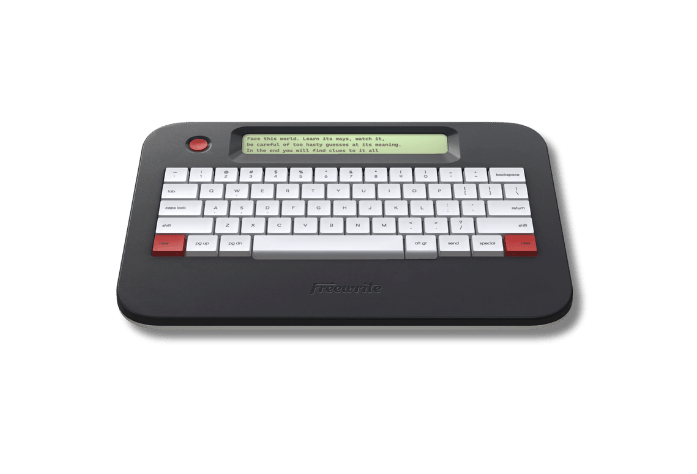Did you grow up enthralled by the stories of the Pevensie children in Narnia or Frodo and Bilbo Baggins in Middle Earth? If you dreamed of one day creating your own fantasy world to base your novels in, this article is for you. We’ll be exploring some top tips for creating fantasy worlds, drawing on advice from some of the heroes of fantasy writing, such as George R. R. Martin, who writes:
We read fantasy to find the colors again, I think. To taste strong spices and hear the songs the sirens sang. There is something old and true in fantasy that speaks to something deep within us, to the child who dreamt that one day he would hunt the forests of the night, and feast beneath the hollow hills, and find a love to last forever somewhere south of Oz and north of Shangri-La. They can keep their heaven. When I die, I’d sooner go to Middle Earth.
Approaching World-Building

The great masters of fantasy writing all have their own quirks when it comes to their approach to world-building. However, there are essentially two broad approaches that you can take. The first is known as outside-in or top-down world-building and the second is called inside-out or bottom-up world-building.
Outside-In World-Building
With the outside-in approach to world-building, your focus is 100% on building your world. This is before you even start to think about the plot of your story. Every detail of the world has to be described and mapped in intricate detail.
Outside-in world-building includes creating detailed histories, mythologies, and etymologies for your world, and these details form the backdrop of your story.
The danger of outside-in world-building is that you get so involved with building your world that you never get around to writing your story. Or you neglect to develop your characters and plot in the same detail. Although the outside-in approach can be a lot of fun, you’ve got to remember that you started building your world to tell a story!
Inside-Out World-Building
Unlike outside-in world-building, the inside-out approach starts with a character or characters and a plot idea. Then, the world is created around the characters so that the details of the world always serve the plot/characters of the story. This was the approach that J.R.R. Tolkien took when writing The Hobbit.
With The Hobbit, Tolkien began with the character of Bilbo Baggins and created Middle Earth around him. Everything in Middle Earth serves the journey that Baggins has to take. For example, the things he has to achieve, and how he grows as a character. The landscape and inhabitants of Middle Earth were then developed, but Bilbo was the starting point.
Mapping Your World

You don’t need to create a map of your world – but doing so is actually great fun. I remember spending hours mapping out the fantasy world of Alaryon when I was a teenager. I used maps from my favorite fantasy novels to guide me. Having a map of your fantasy world gives it more substance, somehow, and gives you something to refer back to when you’re writing.
There are lots to think about when you’re mapping your world. It’s not just about deciding the kinds of terrain, the location of communities, or the placement of key defenses. You need to think about the benefits and challenges of everything from the point of view of your characters.
If a vast amount of your world is forested, your characters may be skilled in wood-working. They may even have a tree-house based community. If your world is surrounded by sea, then your characters are more likely to be skilled in seafaring and fishing.
How will your characters travel around your world? If you make the landscape difficult to traverse, then having characters frequently traveling from place to place can become less believable. All of these things need to be considered when you’re mapping your world.
The Culture of Your World

It’s actually really difficult to create a fantasy world out of a vacuum. What I mean by this is that most fantasy worlds have some kind of basis on which they’re built.
For example, for George Martin, the fantasy world in which the Game of Thrones is set began with a particular concept. This was a world shaped like the British Isles but a similar size to South America. This world then has a culture similar to that of Medieval Britain. This, of course, was just a starting point for world-building for Martin. But you can see how having something on which to build your fantasy world is easier than starting with a completely blank canvas.
When you start with an existing culture or civilization, you build your world by thinking about how your fantasy world is different. It’s an excellent springboard for your creativity!
To get ideas about the springboard for your fantasy world, existing histories or mythologies can be an excellent resource. Fantasy writers often use Arthurian, Aboriginal, and Norse mythology as starting points. You could also choose a particular time period (the Dark Ages, for example). Mythologies, histories, and cultures all offer a rich starting point.
Language and World-Building

J.R.R. Tolkien created the fictional language of Quenya for his Middle Earth-based novels before he began building the landscape of his fantasy world. Of course, Tolkien was a linguist, so creating the Elvish language was something both enjoyable and natural for him. Most fantasy writers don’t go to this extent when world-building.
However, even if you’re not planning on creating a whole new language for your fantasy world, you still need to think about language. Having your characters speak in a particular way is a technique that all writers use to add depth to characters. This also adds realism to your stories.
There are some questions you need to ask yourself when considering the language spoken and used in your fantasy world:
- Is your fantasy world set in a time period comparable to the Dark Ages or in a more recent age? To be more real, choose language constructs that are appropriate for the stage of human development.
- Does your fantasy world cover a vast area, with different tribes or groups of people in different locations? It’s unlikely that people separated by distance will all speak in the same way. Therefore, you should consider giving different tribes different ways of speaking.
Creating Societies in Your Fantasy World

World-building is as much about the people who inhabit it as it is about the landscape of the world. No matter the type of world, people always live in societies – and all societies must have some kind of order or rules.
Consider the magical world of the Harry Potter novels. The magical society is governed by rules – for example:
- Curses can be countered with counter-curses
- Different creatures can have secret powers (e.g. the house-elves)
- There are governing bodies to prevent Muggles from discovering the magic that’s happening.
Questions you need to answer about the societies in your world include:
- What rules and restrictions are there in your societies?
- Who is in power and/or governs your societies?
- Are there opposing societies at war with each other?
- Are different societies in alliance with each other?
- Are there religions or cults in your societies?
- If there are religions, are they monotheistic or polytheistic?
- Are different societies feared by other societies? (e.g. a society that uses magic may be feared by a non-magic society)
Some Final Advice for World-Builders
World-building is like a playground for your imagination, and it’s easy to get carried away with it. The details of your world are vital for enabling your readers to envision the world of your novel. But too much detail can be a bad thing. It’s really important not to do an ‘information dump’ in your story. Overwhelming your readers with information is off-putting, to say the least.
You have to get the balance right when revealing essential information to your readers. Do it slowly and in a controlled manner, the way that the masters of fantasy do. Learn from experts such as Tolkien and J.K. Rowling. It can be helpful to re-read the classics of fantasy writing to familiarize yourself with the way that information is revealed. Take notes as you read and implement what you learn in your own writing.
But, most of all, never see world-building as a chore! If world-building feels like work, maybe you should be looking for a different genre to write in!



























